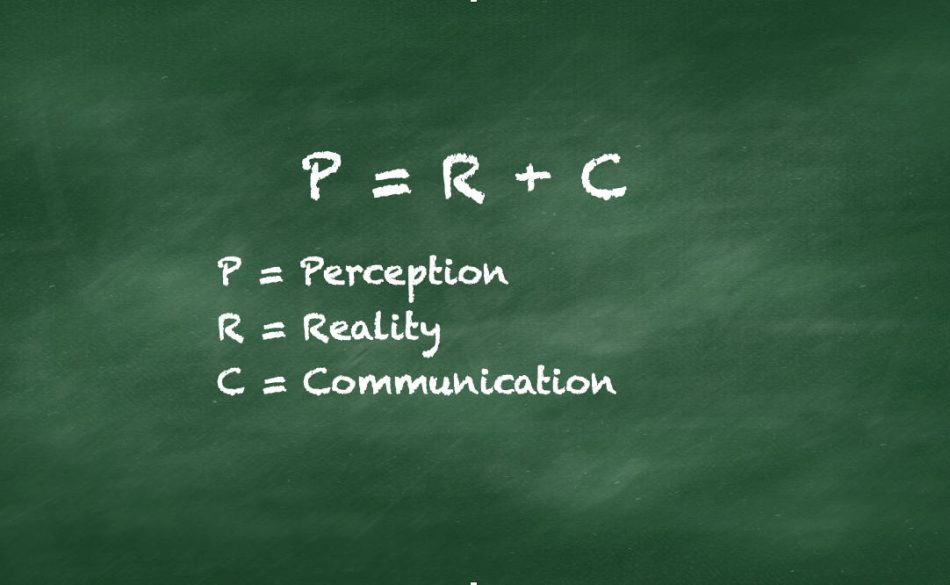Originally posted this article in 2018, I updated this article in June 2019 to include more examples.
Perhaps one of the simplest concepts I have found effective in many phases of my business and personal life is a simple equation that describes the relationship between perception, reality, and communication.
The first place I remember hearing about this elegant relationship was when I was taking a class at Stanford Business School on Building Market Focused Organizations taught by Dr. Lynn Phillips. In that situation, it was employed mostly on how to relate to customers, but the concept is easily extensible to a myriad of purposes. In fact, walking around a building in my organization, one might see the equation below on boards in offices or conference rooms, written down by employees to maintain focus.
The equation is simply:
Perception = Reality + Communication
| Perception: | The resulting collective view or impression that a person or group has about a topic of interest. | |
| Reality: | The actual truth about the topic of interest. | |
| Communication: | The collective information flow to that person or group about a topic of interest. |
Basically, it states that a person’s collective impression or understanding of a subject is influenced by a combination of the reality (or truth) about the subject and what is communicated to that person about that topic.
In many cases, we want to manage one’s perception or at least drive toward getting the desired perception on a subject. According to the equation, this means creating the actual reality about the topic in combination with effective communication.
If we want someone to have a certain perception and the reality is not consistent with that perception, then eventually that person will learn the truth no matter how effectively we try to communicate otherwise. For example, no matter how good a product’s advertising is if it doesn’t do what it says it does, the end user will ultimately discover it. Advertising and marketing cannot compensate for product or service flaws.
On the other hand, if we create the reality we want the person to perceive but don’t effectively communicate it, the person will never perceive the reality. It’s not unlike the parable of a tree falling in the woods. If no one tells us it happened and we didn’t hear it for ourselves, it is unlikely we will know that a tree fell.
To create a reality that meets or exceeds the expectations of the person in which we want the positive impression, we must develop a communication plan. This works with any stakeholder and even within family units.
It is quite common for me to write this equation on the whiteboard during meetings with teams. When someone makes a statement, for illustrative purposes, “The customers believe that the product is too noisy!” I refer to the equation and ask what evidence we have that it’s really their perception? If we agree that it is their perception and we want to change it, then we need to go back to the equation.
If we want to change our customer’s perception, we must decide on what combination of reality and communication to change to get the customer to ultimately have the perception we want.
Applying to Engineering and Scientific Fields
One thing I’ve noticed is that just because someone is really good at solving equations or problems or writing down answers doesn’t mean that the world will change because of it. If someone solves a problem but no one picks it up and uses it, then is it actually solved? One of the key things is scientists and engineers have to find a way to get their results accepted, approved, and used to make a difference in the world. To me, this is another example of perception. Just because one has the reality (solution), if a communication plan doesn’t exist, then one cannot create the perception of having changed the world.
The following anecdotes also illustrate the concept:
Anecdote 1 – Registration Line at a University
Anecdote 2 – Parking at a University
Anecdote 3 – Applying the Perception Equation to Relationships
Anecdote 4 – Recovering Drones without Nets
To continue this discussion and understand how bias influences the perception equation, see Advanced Perception Equations.
Share this Post

